A woman in her 30s from Minatomirai came to the clinic with pubic pain after giving birth.
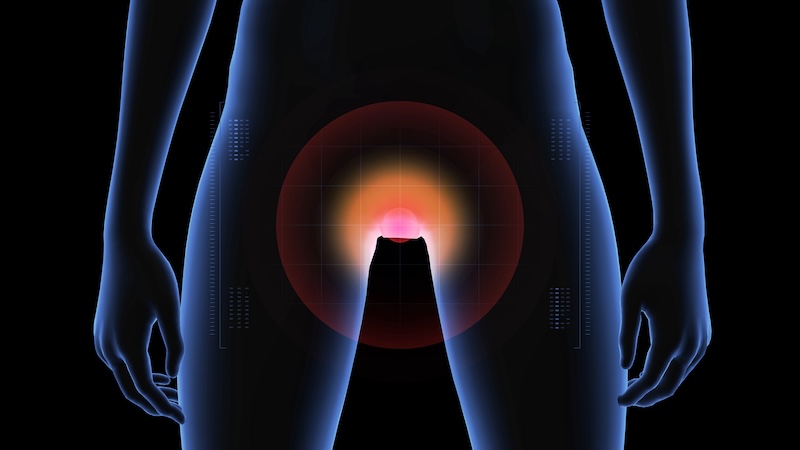
The patient, a woman who gave birth one month ago, began experiencing pain and discomfort in the pubic area shortly after delivery.
She reported that from immediately after childbirth, she felt an unusual sensation around her pubic symphysis. The pain was particularly noticeable during activities such as bending over or lifting her baby, adding to the stress of her first-time parenting experience.
Specific movements that triggered the pain included standing up from a bent position and lifting her right leg when putting on pants.
About a week after delivery, she consulted her doctor (as care transitioned from obstetrics to pediatrics), reporting her symptoms. However, as she was still breastfeeding, she was not prescribed any medication. Instead, she was given Chinese herbal medicine and advised to avoid taking baths—likely as a precaution against possible inflammation.
Later, during her baby’s health checkup, she mentioned her ongoing symptoms again, but was told, “This isn’t really our area of expertise. You should see a gynecologist.”
She subsequently visited a gynecologist on another day. A pelvic X-ray was taken, but no abnormalities were found. She was advised to use a pelvic support belt and perform massages around the pelvic area.
Despite following this advice, her pain persisted for another week. Feeling desperate, she searched online and found my clinic. Not having experienced chiropractic care before, she decided to try it after seeing that my clinic listed “pregnancy and postpartum pain” among the conditions I treat.
[Initial Symptoms]
Interview:
In addition to the challenges of first-time parenting, the patient reported feeling increasingly stressed due to pain triggered by everyday movements. She openly shared that she felt lost and unsure of what to do since the hospital was unable to provide further care for her condition. With a sense of desperation, she decided to give chiropractic care a try and came to our clinic.
Visual Inspection:
Visual examination revealed no abnormalities.
Static Palpation:
With the patient’s consent, a palpation examination was performed around the affected area due to its sensitivity.
A marked difference in muscle tension was noted in the right adductor brevis, showing excessive tightness.
Additionally, significant hypertonicity was observed in the contralateral left hip abductor muscles.
Motion Palpation:
Significant pelvic misalignment was observed, with the right pelvic bone positioned anteriorly and the left pelvic bone positioned posteriorly.
During a prone position examination, where pressure was applied to the pelvis, the patient reported a sensation radiating to the pubic area.
Orthopedic Tests:
The following tests are typically used to assess the sacroiliac joints (posterior pelvic joints) and hip joints, but in this case, I performed as stress tests for the pubic symphysis.
Gaenslen’s Test (+): Pain was elicited in the pubic area on both sides.
Patrick’s Test (FABER Test) (+): Pain was reproduced on the right side (groin pain).
Laguerre’s Test (+): Reproduced the same groin pain as seen in the Patrick’s Test.
Muscle Strength Examination:
(5-point scale, with 5 indicating normal/maximal strength)
Adductor muscles: 3/5 — Weakness observed on the right side due to pain. Slight pain also elicited on the left side.
Abductor muscles: 4/5 — No pain was induced during testing, but the patient reported a sense of discomfort on both sides.
[Initial Treatment Plan]
The primary focus of the initial treatment was on adjusting the right adductor muscles and the left hip abductor muscle group, along with relieving tension in the lumbar and gluteal muscles.
Following this, pelvic alignment correction and hip joint range of motion adjustments were performed.
The patient was advised to return for follow-up after one week of observation, marking the completion of the first session.
[Prognosis]
Second Visit:
The patient reported complete resolution of pain during daily activities and expressed great relief and satisfaction.
The same treatment approach was applied, and a two-week observation period was recommended.
Third Visit:
After two weeks, the patient remained completely pain-free.
As a result, the treatment was concluded at this stage.
Given the significant improvement within just a few sessions, the patient was extremely pleased and, considering the ongoing physical demands of daily childcare, requested regular check-ups.
Therefore, I transitioned her to a maintenance phase with monthly treatments.
Although the initial symptoms had fully resolved, she continues with monthly care in her second year of follow-up to help manage accumulated daily fatigue and prevent future recurrence of pelvic misalignment and lower back pain.
[Practitioner’s Opinion]
This patient’s condition was a typical case of pubic symphysis pain.
As shown in the diagram, biologically, women have a wider pelvic structure compared to men.
This anatomical difference is one of the reasons why women are more prone to issues around the pelvis, including the hip joints.
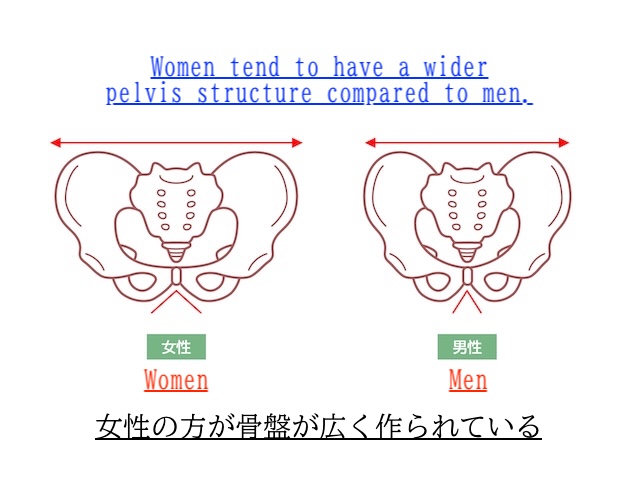
Furthermore, as shown in the diagram below, the pelvis after childbirth tends to widen laterally.
It is common for maternity hospitals to advise postpartum women to use a pelvic belt or similar support to help close the widened pelvis.
However, when considering pelvic movement in three dimensions, I must address not only lateral widening but also anterior-posterior and vertical distortions.
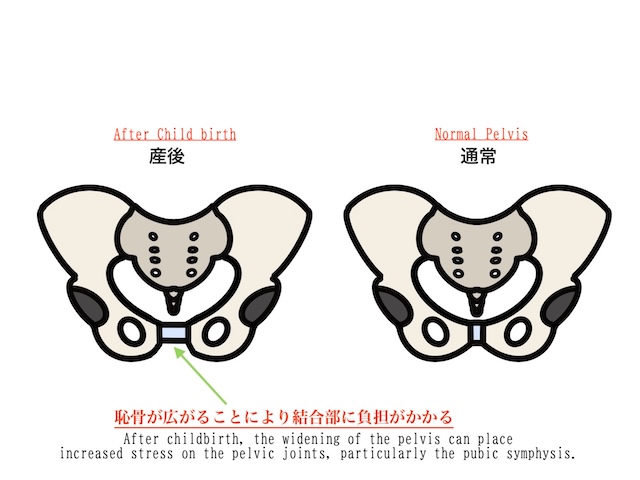
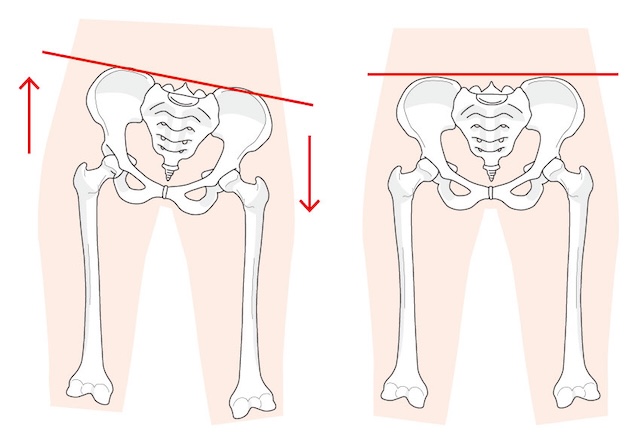
If pelvic misalignment exists in the vertical plane and is then stabilized without correction, the misalignment itself becomes fixed in place.
In such cases, even with the use of a pelvic belt, secondary issues such as lower back pain, hip joint pain, or pubic symphysis pain—as seen in this case—may develop.
At Spine Chiropractic, I always approach joint function and alignment from a three-dimensional perspective when designing treatment plans.
In this particular case, the primary cause was thought to be continuous torsional stress applied to the pubic symphysis.
By correcting pelvic alignment, I am able to reduce the mechanical load on the pubic symphysis.
Based on my long clinical experience with chiropractic care, I have seen many cases of pubic pain.
In most of these cases, the cause is mechanical stress acting on the pubic area, making this condition highly responsive to care and usually quick to resolve with proper treatment.
However, even after improvement, it is common for symptoms to recur due to everyday activities such as holding a child on one hip, developing an asymmetrical weight-bearing posture, or the increasing physical demands of lifting as the child grows heavier.
Therefore, in this case, the treatment involved not only pelvic realignment but also correction of the significant muscle tension imbalance between the right hip adductors and the left hip abductors.
(The diagram below shows the muscles of the thigh.)
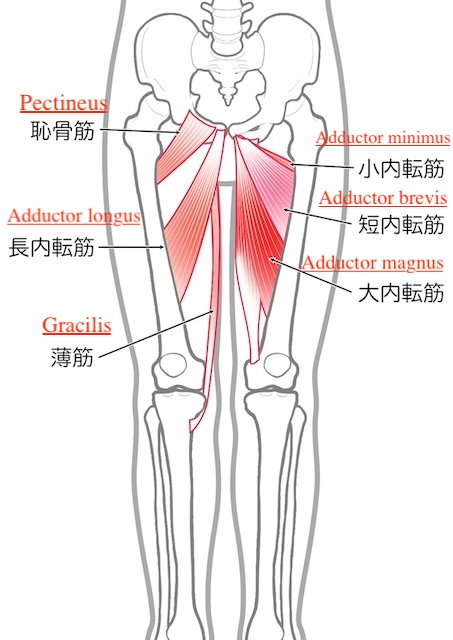
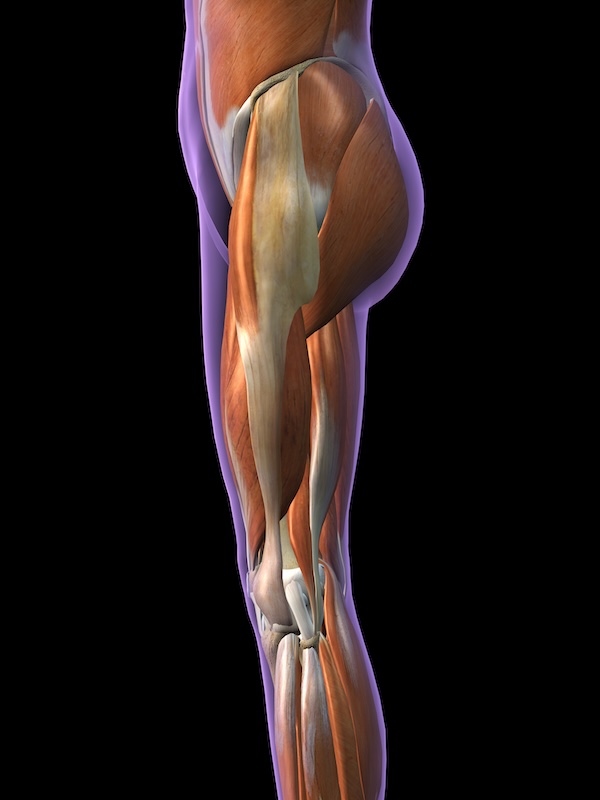
Even after pelvic correction, if movement patterns and muscle usage remain unbalanced, skeletal misalignment can easily recur.
Therefore, in addition to skeletal adjustments, addressing muscle tension imbalances and providing lifestyle advice are essential for preventing recurrence.
In this case as well, through chiropractic care at Spine Chiropractic—including improving muscle flexibility, enhancing joint mobility, and offering daily living guidance—the patient was able to prevent the return of symptoms.
However, given the physical and mental demands of daily life and childcare, she is currently continuing maintenance care to prevent recurrence and to maintain overall health.
At Spine Chiropractic, I address a wide range of musculoskeletal conditions directly impacting daily life, not merely as a form of relaxation therapy. Conveniently located within a one-minute walk from Bashamichi Station, an eight-minute walk from Nihon-Odori Station, a seven-minute walk from JR Kannai Station, and a 12-minute walk from JR Sakuragicho Station, my clinic is well-suited for residents and workers in the Yokohama area.
If you are experiencing similar symptoms, please feel free to visit Spine Chiropractic. I am committed to providing care with sincerity and professionalism.